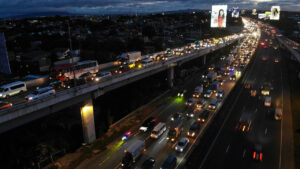Rethinking Mobility: Embracing mass transit over elevated toll roads
Traffic congestion has long been the bane of Metro Manila (MM) commuters and motorists alike, particularly along EDSA. As authorities search for solutions to alleviate this gridlock, proposals for elevated toll roads have surfaced.

(This is a statement released by the Management Association of the Philippines on March 15 and signed by the authors. — Ed.)
Traffic congestion has long been the bane of Metro Manila (MM) commuters and motorists alike, particularly along EDSA. As authorities search for solutions to alleviate this gridlock, proposals for elevated toll roads have surfaced.
Having elevated toll roads is a quick fix that may offer traffic relief, albeit short term, as they ultimately fail to address the underlying issues of sustainability, equity, and environmental impact.
The Braess Paradox and, similarly, the induced demand phenomenon have proven time and again that adding more road space only attracts more cars that will sooner than not choke the new road space with severe traffic congestion. The status quo ante will prevail in no time.
Instead, prioritizing investments in mass transit systems presents a far more viable and sustainable solution to the mobility challenges faced by MM and will be in consonance with the NEDA National Transport Plan (NTP) and the Management Association of the Philippines (MAP) Holistic Plan for traffic and transportation, wherein mass transportation is prioritized to move people, not cars.
A well-designed mass transit network, including efficient bus rapid transit (BRT) systems, light rail transit (LRT), and metro systems can significantly move more people and reduce congestion by drastically reducing private car usage, while minimizing greenhouse gas emissions and improving air quality.
Elevated toll roads come at a significant cost. They will cause massive congestion and disruption at ground level during and after construction that will add to the already heavy cost to society, the economy and the environment.
Additionally, an elevated toll road will permanently preclude the transformation of EDSA from an ugly concrete corridor to a pleasant tree-lined avenue where clean energy mass transit is the primary means to move people, not traffic-congesting private vehicles; where sidewalks can be widened for landscaping for much needed softening of the urban landscape that would invite and enhance non-motorized mobility.
Elevated toll roads prioritize private vehicle usage, perpetuating car-centric urban planning and exacerbating issues of inequality in access to transportation.
Mass transit serves the broader population, including low-income communities who may lack access to private transportation, thus fostering social cohesion and economic opportunities for all residents, while offering long-term sustainability benefits that elevated toll roads cannot match.
Transit-oriented development around mass transit hubs can promote walkable neighborhoods, reduce urban sprawl and preserve green spaces.
The MAP encourages the government and the big infrastructure players to prioritize investments in mass transit systems that address the needs of all residents, while building more resilient, inclusive, and environment-friendly urban infrastructure for generations to come.
Noel P. Bonoan is the MAP vice-president, and Eduardo H. Yap is the chair of the MAP Transportation and Infrastructure Committee.













